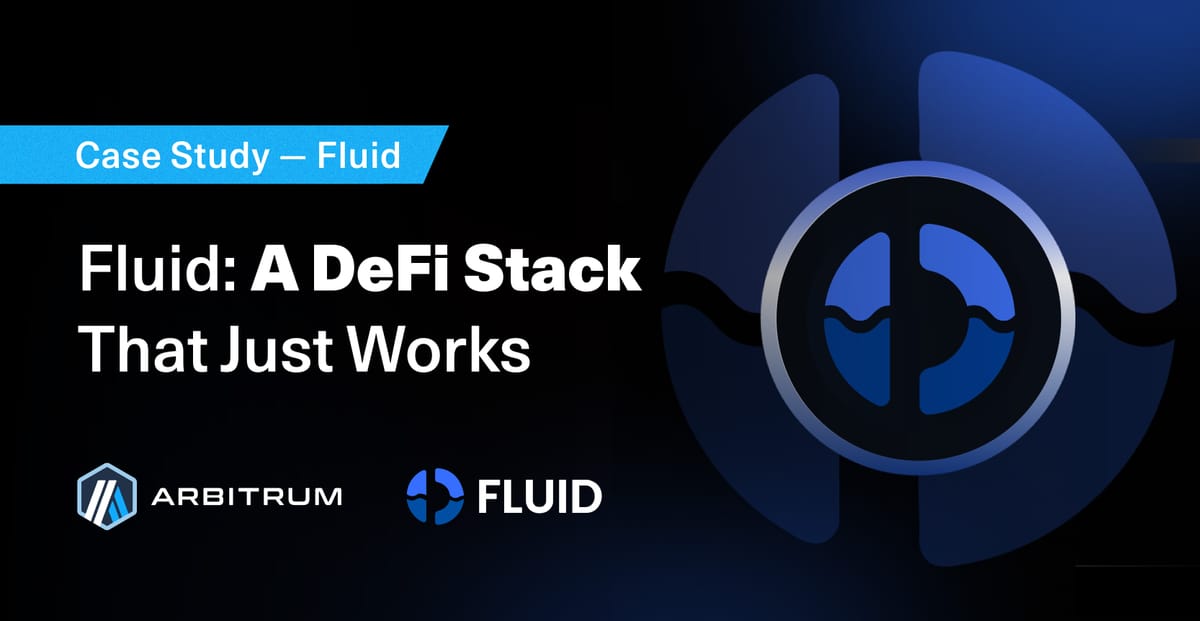Fluid: A DeFi Stack That Just Works

Instadapp is quietly powering one of the most efficient and capital-optimized DeFi experiences on the blockchain today. Whether through smart lending or trading, Instadapp’s latest product, Fluid, is quickly becoming a liquidity layer that is doing a lot more than just aggregating yield.
When Instadapp launched in 2018, it had one simple goal: to make DeFi easier for everyday users. At the time, navigating between different DeFi protocols wasn’t an easy task and the user experience was clunky and risky, far from being intuitive. Instadapp saw this opportunity, and created an elegant and unified interface to streamline these protocols.
As time went on, another challenge came to the light, they realized that a polished front-end wasn’t enough to create the most optimized user experience. Building on the back of other protocols meant accepting their limitations whether it was capital efficiency, user experience or control. In order to build something truly efficient and seamless, they needed to start from scratch. So, they did.
Instadapp launched Fluid in early 2024. Fluid isn’t just a protocol that users simply plug into. It’s a unified system where lending, trading, borrowing and other DeFi activities can operate on shared logic and liquidity.
How Fluid Makes DeFi More Efficient
Fluid is designed so that money can flow more efficiently on the blockchain. Since its launch, it has attracted nearly $2 billion in collateral deposited, all achieved without flashy incentives.
As mentioned earlier, the DeFi space is rather segregated, with trading occurring in one corner and lending happening in another. Capital oftentimes either ends up backing a loan, or used to provide liquidity leading to idle assets and fragmented yield.
Fluid addresses this issue by treating liquidity as a shared resource. When users borrow using Fluid, their funds aren't just sitting idly in their wallets. Instead, their funds earn trading fees. This is referred to on Fluid’s platform as “Smart Debt,” where borrowed assets earn trading fees, which ultimately reduces the overall cost of borrowing in real time.
Similarly for lenders, their collateral won’t just be locked away waiting for repayment. Fluid allows its users to supply LP tokens from its DEX as collateral, allowing them to earn additional yield. This is referred to on Fluid’s platform as “Smart Collateral.”
In addition to these benefits, Fluid’s responsive range-based liquidation engine offers liquidation thresholds which are as high as 97%, and liquidation penalties as low as 0.1%. Making it one of the most user-friendly lending terms available in DeFi today.
Working with Arbitrum
When Fluid decided it was time to branch out beyond Ethereum, Arbitrum was its first stop. This was because the chain has been defined over time by real usage. Arbitrum’s growth has been driven by organic DeFi adoption, its technology allowed Fluid to shine, offering high-throughput, low fees and genuine user demand.
What’s Next for Fluid?
Fluid’s DEX V2 is planning to launch later this year, offering additional DEX deployments that are permissionless and customizable. This includes:
- Modular AMM logic
- Adjustable fee structures
- Native integrations
- Hook support and oracle access


































